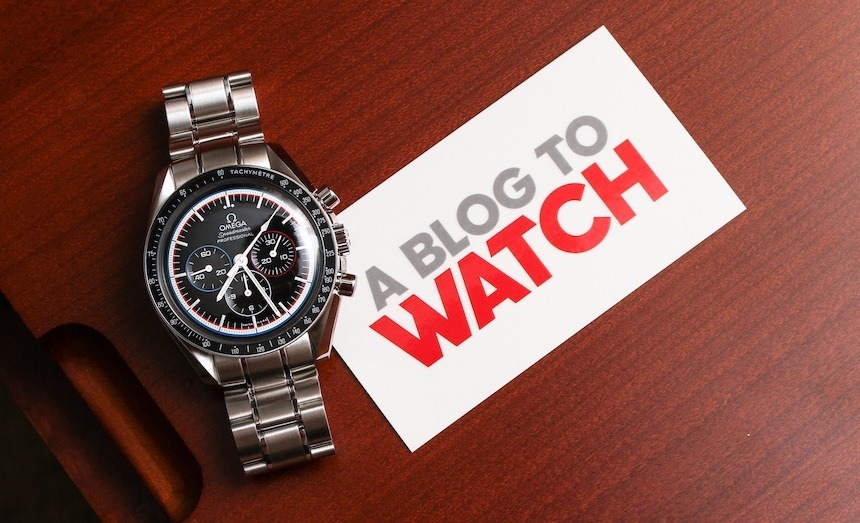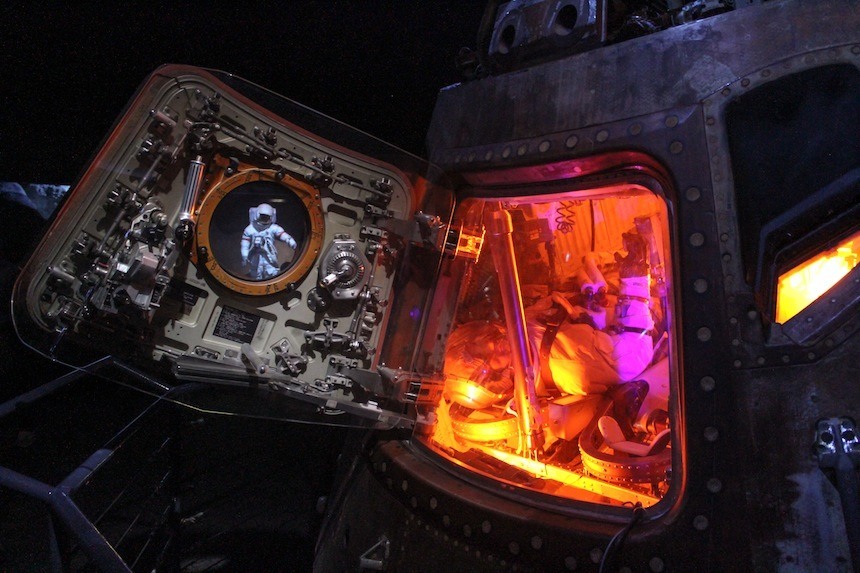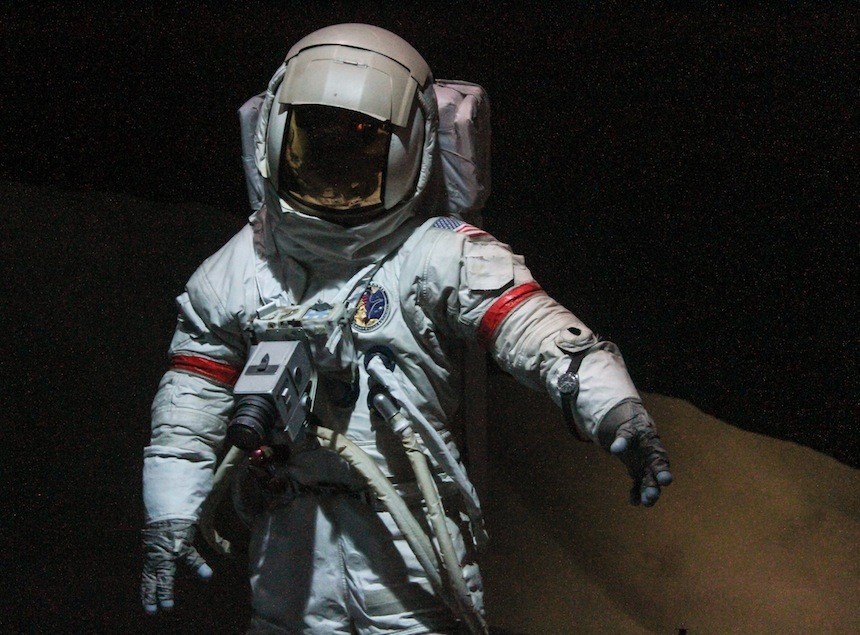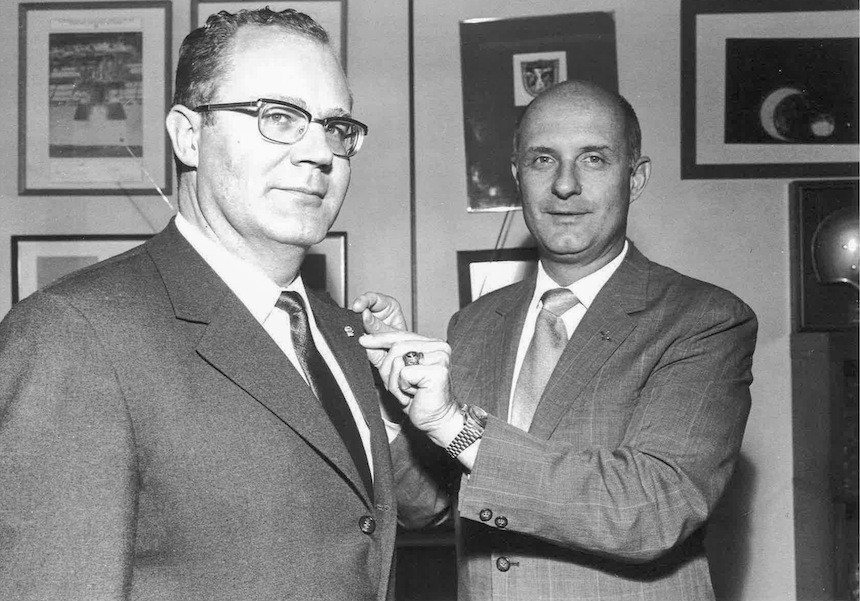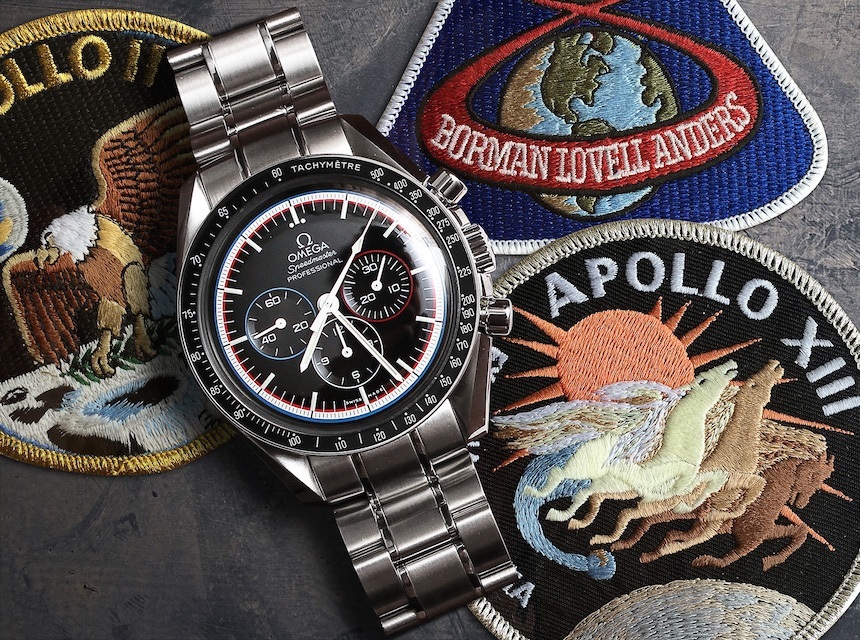
As I sit in the lounge awaiting a non-stop flight to Houston, I can’t help but contrast the banality of my upcoming flight against the razor’s edge reality of flying an Apollo mission. I’ll be flying in a modern aircraft, ferried from one computer-controlled terminal to another, in relative comfort. The risks are negligible and my “training” can be effectively ignored for about three minutes as the plane taxis to the correct runway. Once underway, my only duties are to relax, read a book and likely eat more food and drink more coffee than my hunger warrants. To force the term, my “mission” is to act as cargo for roughly four and a half hours until arriving in Houston, wherein Omega has invited me to a celebration of Apollo 13, the Omega Speedmaster, and a few of the actual people that ferried their iconic chronograph into the final frontier and then relied upon its mechanical capabilities to bring them home.
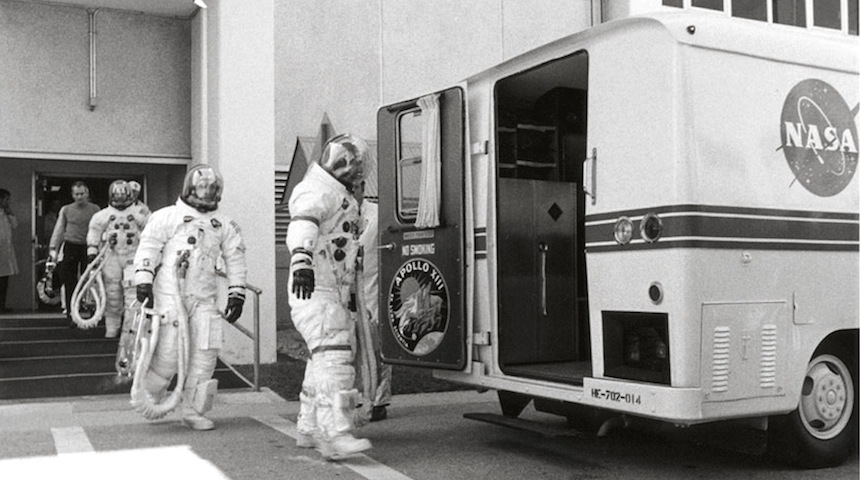 In contrast, by the time they made it to their mission, Apollo astronauts were anything but passengers along for a wild ride. Representing, in part, some of the best pilots of their generation, Apollo astronauts “flew” in a fragile tin can borne atop a giant rocket that carried them away from every conceptual and literal link to home and life as you and I know it. The risks were astronomical and their goal anything but routine. They had trained for years to blast into uncharted territory, protected by only a thin metal shell from the unrelenting vacuum of space, with the lofty hopes of setting foot on the Moon.
In contrast, by the time they made it to their mission, Apollo astronauts were anything but passengers along for a wild ride. Representing, in part, some of the best pilots of their generation, Apollo astronauts “flew” in a fragile tin can borne atop a giant rocket that carried them away from every conceptual and literal link to home and life as you and I know it. The risks were astronomical and their goal anything but routine. They had trained for years to blast into uncharted territory, protected by only a thin metal shell from the unrelenting vacuum of space, with the lofty hopes of setting foot on the Moon.
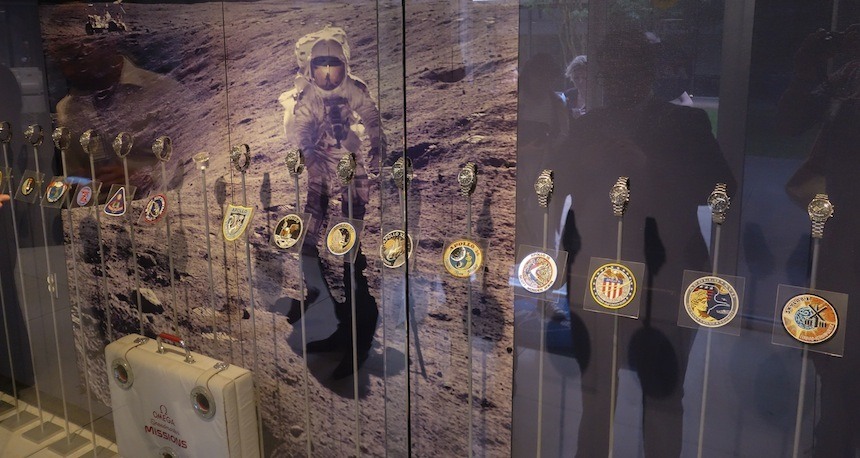
By today’s standard’s, Apollo went to the Moon and back with little more processing power than a calculator and the invaluable support of Mission Control. But even after suffering a mission-ending systems failure and despite all odds, Apollo 13 had all of the brain-power and tools required to make it back to Earth with no loss of life. One of the tools that brought them home was the Omega Speedmaster, a mechanical chronograph watch that allowed the crew to time the course corrections required to keep their ship pointing towards Earth. With their guidance computer turned off to preserve battery power for re-entry, the Omega Speedmaster played a major role in ensuring that Apollo 13 was both a “Successful Failure” and one of the most impressive achievements of skill, ingenuity and teamwork in NASA’s history.
Perhaps a brief re-cap is required for those of you who don’t remember the broad details of the Apollo 13 mission. In short, Apollo 13 was the 7th manned mission within the Apollo program and should have taken Commander Jim Lovell, Command Module Pilot Jack Swigert and Lunar Module Pilot Fred Haise to the Moon and back. Two days after their April 11th, 1970 launch from Kennedy Space Center in Florida, an oxygen tank in the Command Module exploded, forcing the crew to abort their Moon attempt, abandon the crippled Command Service Module (CSM), and return home in their Lunar Module (LM). The LM was not designed to support three people for a 4-day trip, so the astronauts worked with Mission Control to develop special procedures to conserve fuel, battery power, oxygen, and water. With the LM running on minimal resources and well outside of tested usage, Apollo 13 circled the Moon and set a course to limp home with just enough of the ship turned on the keep its precious cargo alive. After a series of truly impressive manual burns for course correction, Apollo 13 successfully re-entered Earth’s atmosphere and touched down in the South Pacific on April 17th, 1970.
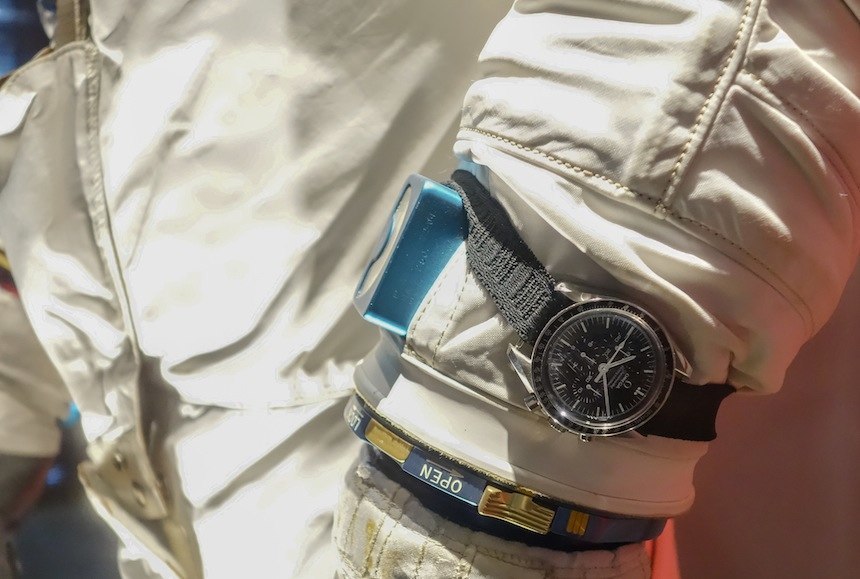
This year marks the 45th Anniversary of Apollo 13 and, given the Omega Speedmaster’s crucial role in the Apollo program, it’s not surprising that Omega would want to celebrate one of the finest moments in Moonwatch history. Pulling out all the stops, Omega collected a bevy of media types, brought them all to Houston, and packed a day full of NASA-certified fun to highlight their connection with the Apollo program and the cult of the Moonwatch. From getting up close and personal with a Saturn V rocket, to a Q&A with Apollo astronauts, and finally a Tang and vodka fueled dinner on the Moon with George Clooney, I’m fighting every urge to say it was an out-of-this-world experience (sorry).
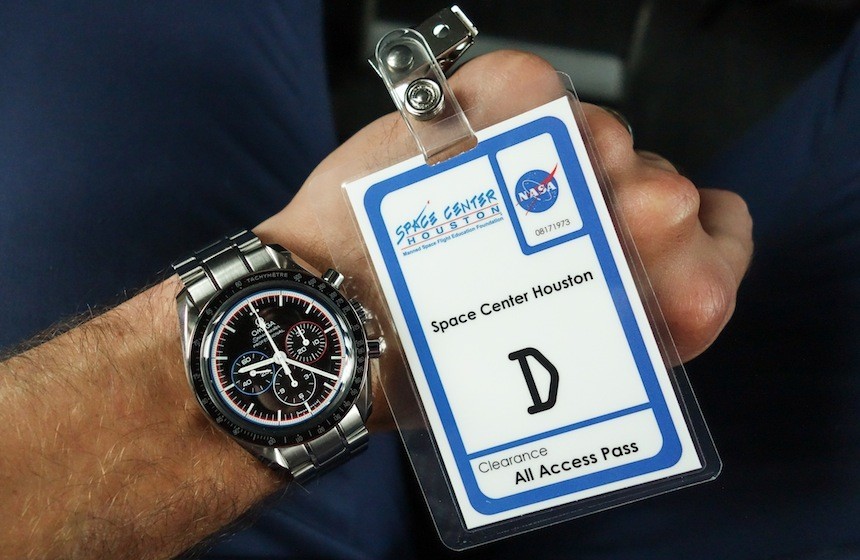
With hundreds of people in attendance, we were divided up into more manageable bus-sized groups and ferried to the Johnson Space Center, where NASA still operates to this day. The tour began at the awesomely-named “Rocket Park” where we were invited into a hangar that barely contained an entire Saturn V rocket.
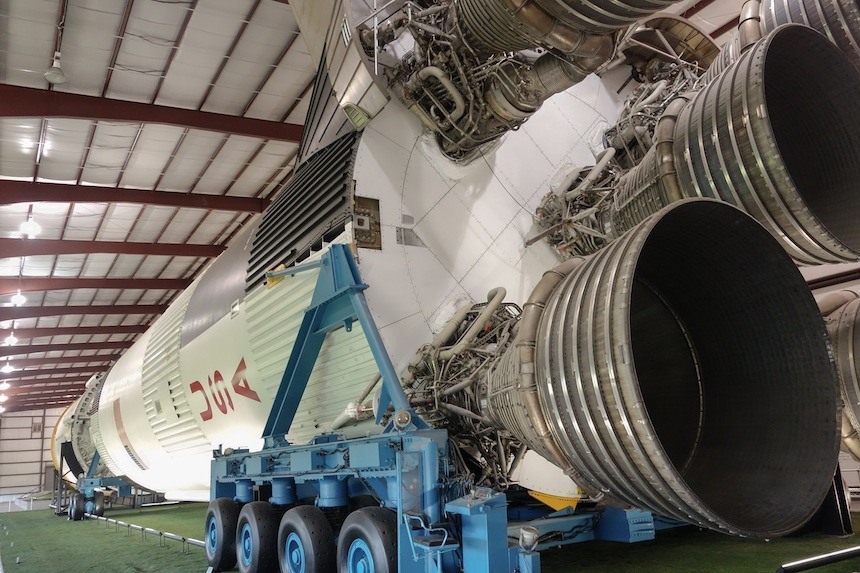 Academically, I knew the Saturn V was large, but in person, it’s staggering. At 363 feet long, the hangar which served as its final resting place was not wide enough to allow for a viewpoint of the entire rocket; it exceeded the visual landscape. Furthermore, upon walking through the door way, I was confronted with an unobstructed view of the five thrusters that dominate the rocket’s tail-end. Those of you who follow me on Instagram were treated to the following view, and I would describe the mood of those in the shadow of the Saturn V as “briefly stunned into silence.”
Academically, I knew the Saturn V was large, but in person, it’s staggering. At 363 feet long, the hangar which served as its final resting place was not wide enough to allow for a viewpoint of the entire rocket; it exceeded the visual landscape. Furthermore, upon walking through the door way, I was confronted with an unobstructed view of the five thrusters that dominate the rocket’s tail-end. Those of you who follow me on Instagram were treated to the following view, and I would describe the mood of those in the shadow of the Saturn V as “briefly stunned into silence.”
Business end of a Saturn V rocket. Mega.
A photo posted by James (@jestacey) on
I would compare my Saturn V experience to that of seeing an SR-71 Blackbird aircraft in person, and I found myself considering all of the meetings, math, and late nights that created this marvel of brute force. As with the SR-71, there is a special comfort in experiencing such an impressive piece of engineering that was not designed to be a weapon. The Saturn V was built to send Americans into the unknown, but its value, its success, was as a tool for mankind.
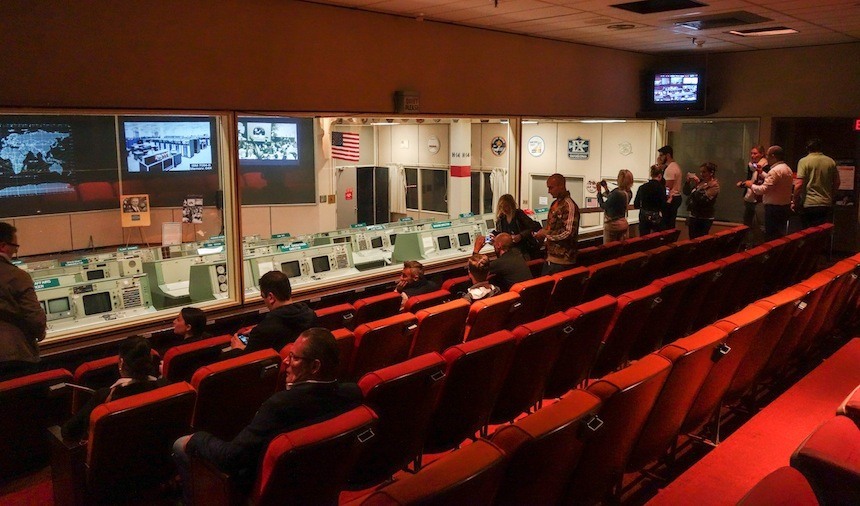
Up next on our tour was the historic Mission Control, which was about as large as you’d expect if you’ve seen Ron Howard’s Apollo 13 movie. Standing in the viewing gallery felt strange, a surreal experience of witnessing a famous set piece long after it had been canonized. I recently had the pleasure of touring the legendary USS Missouri at Pearl Harbour and Mission Control elicits the same perspective. Much like a great battle ship, the age of the analog technologies within Mission Control has come and gone. Its value is now sentimental, referential, and iconic.
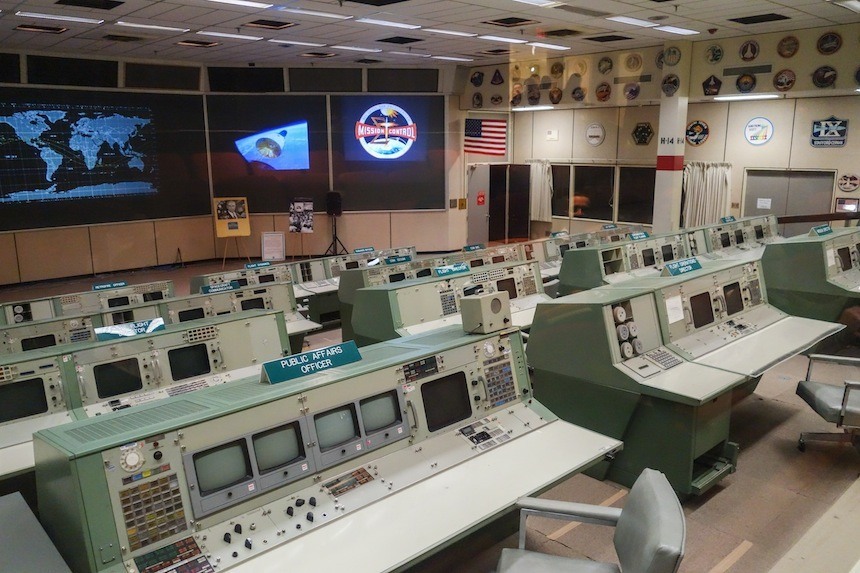

In the viewing space, you could sit and overlook the stage that safely sent man to the Moon and back – this is where the magic happened. Frozen in time, NASA has restored Mission Control to look as close as possible to when Apollo 11 landed on the moon, a diorama to the golden age of space travel.
After a light lunch, we were ushered into a small theater for the tour’s main event, a Q&A with Commander Jim Lovell (Apollo 8 and 13, below center) and Lieutenant General Tom Stafford (Apollo 10, below right), along with President of Omega Watches Stephen Urquhart (below left).

After a brief presentation, many of the questions surrounded NASA’s future role in space travel, manned missions to Mars, and various details of Apollo 13. All of that is well and good, but Jim Lovell is one of the finest pilots of our age, and the Apollo 13 crew managed to “fly” a lunar module back to earth with the guidance computer shut off for most of their trip. When I got my chance, I asked about the difficulty of performing the 39-second manual burn that was highlighted in the film Apollo 13. This was Jim Lovell’s reply,
“Well, the maneuver was made manually, we had no way of controlling the attitude of the space craft. We did it by looking at the Earth – and you’ve all seen pictures of Earth from space – the nighttime, the daytime, that line between the two out there, we call it the terminator. In the window of my Lunar Module I had a gun sight, or a crosshair, normally used for rendezvous or docking. If I could put the gun sight on the Earth’s terminator, superimpose the horizontal line of my gun sight with the terminator, that would then place the engine in a position to either steepen up or shallow up that angle on the way home – which is what I had to do, if we lit the engine just at the right time. It was seat-of-the-pants, something that was developed for Apollo 8, but of course, never used. We removed that procedure from our flight manuals, thinking that it was unnecessary, and then on 13, suddenly it became very necessary. Very fortunately, I was on Apollo 8 so I remembered that maneuver because I didn’t have it written down any place; of course, Mission Control also assisted, and that’s how it all came to pass.”Imagine that, flying “seat of your pants” in the void of space, just a rocket, a cross hair and a mechanical chronograph to see you home: madness of the best kind. While a dinner on the Moon in the presence of a true A-lister still lie ahead, the astronaut Q&A was the high point of the tour, and it was nothing short of a thrill to see Lovell and Stafford hold court at Johnson Space Center. For those of you wondering, I couldn’t tell what Jim Lovell had on-wrist, but Tom Stafford was sporting an Omega Speedmaster Apollo-Soyuz LE (a fitting choice).
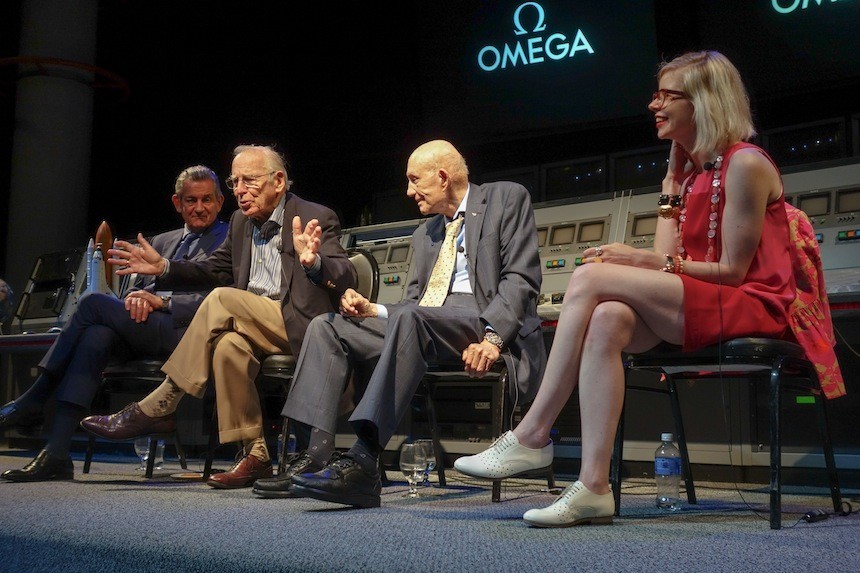
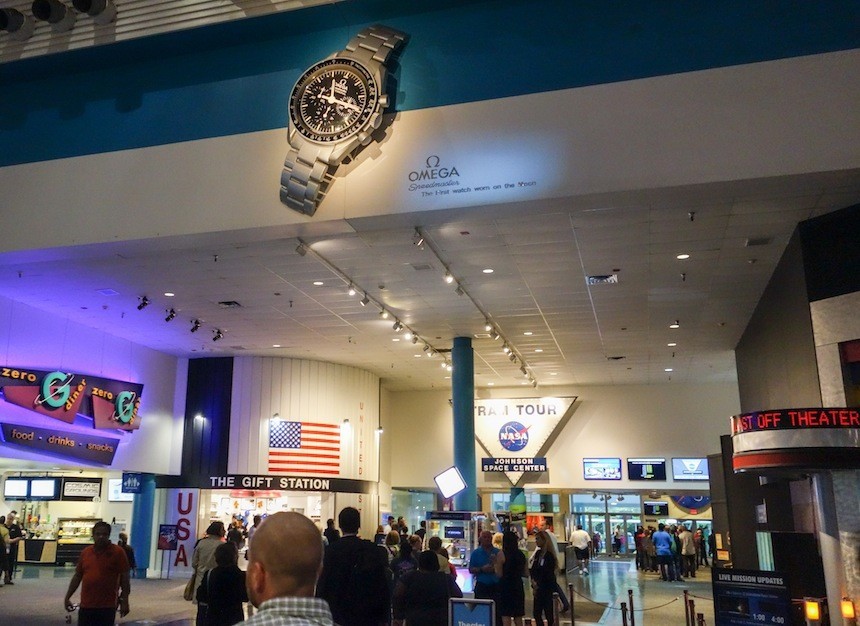
After the Q&A, we were treated to a walking tour of Space Center Houston, Johnson Space Center’s public facing museum. From many generations of NASA spacesuits, to a walk-on module from Skylab, and even the actual Command Module from Apollo 17, if you’re in Houston don’t miss out on a chance to check out Space Center Houston.
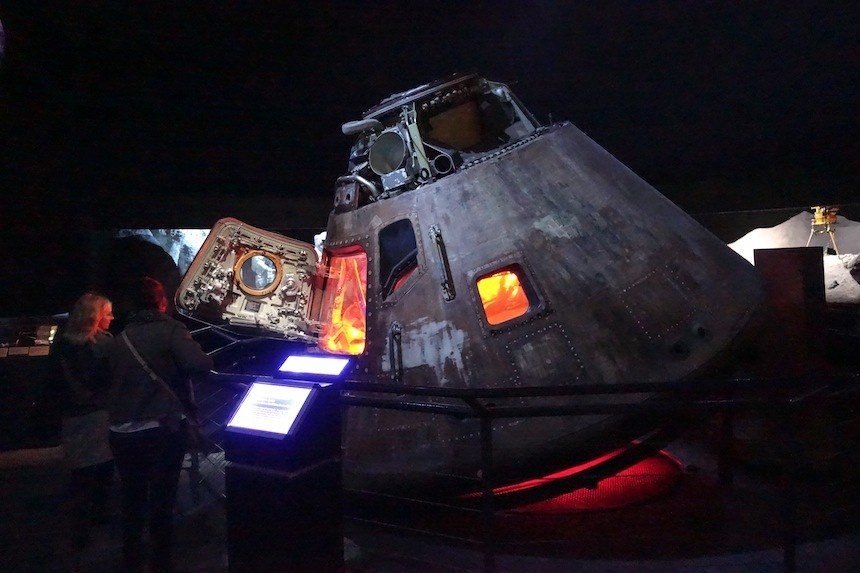
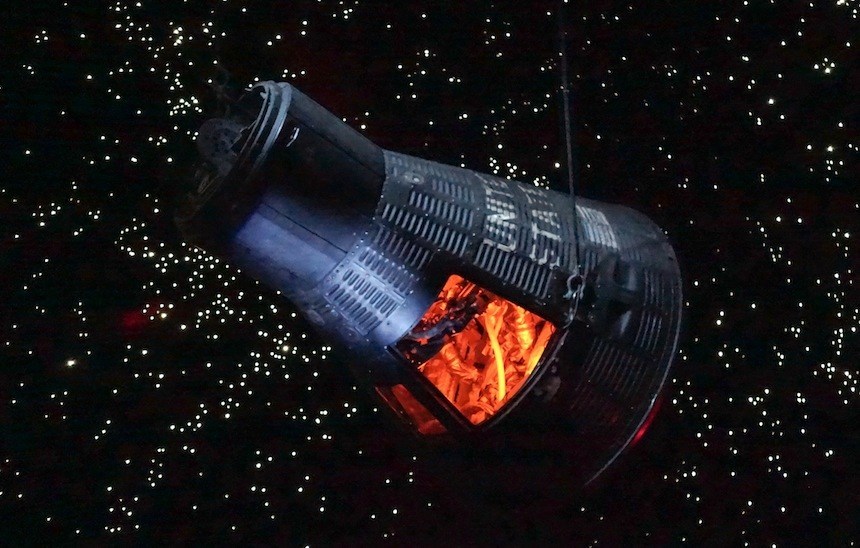
Along with the Apollo 17 module, we also saw Gordon Cooper’s actual Mercury-Atlas 9 Capsule “Faith 7” (above), which he used to circle the earth 22 times back in 1963. The capsule is so much smaller than I expected, with only the base of the flared section wide enough to house a crouched pilot. That must have been some ride.
That evening, after successfully squeezing into my rented tux, I was off to the big dinner event that was to be attended by not only a few astronauts but also noteworthy Apollo-nerd and Omega ambassador George Clooney. Buses ferried the entire group to an airplane hangar, the entrance to which looked like something from the set of 2001: A Space Odyssey.
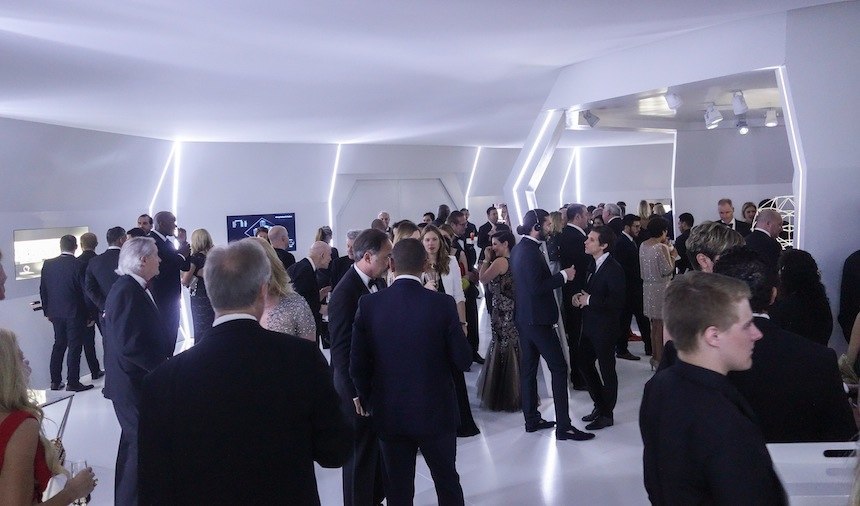
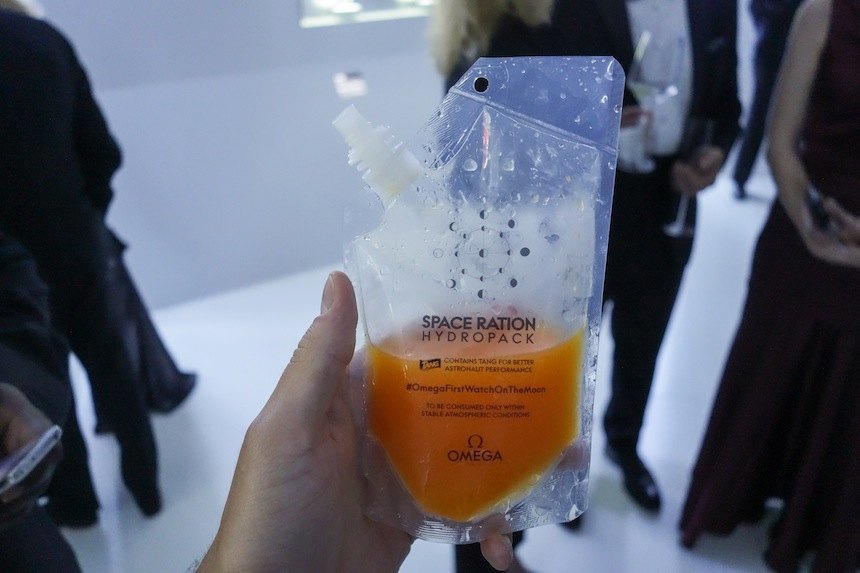
Once aboard our “spacecraft,” we were offered space rations in the form of Tang and vodka. With all the guests aboard, an alternate doorway slid open to reveal that we had indeed arrived on the Moon. Constructed in the hanger before us was a large dinner area that was surrounded by a rocky Moon-scape, and we were entirely encircled by the starry glowing backdrop of space.
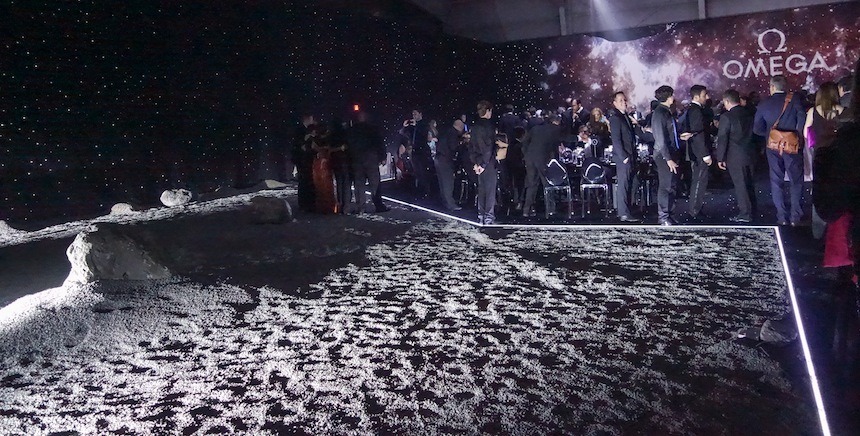
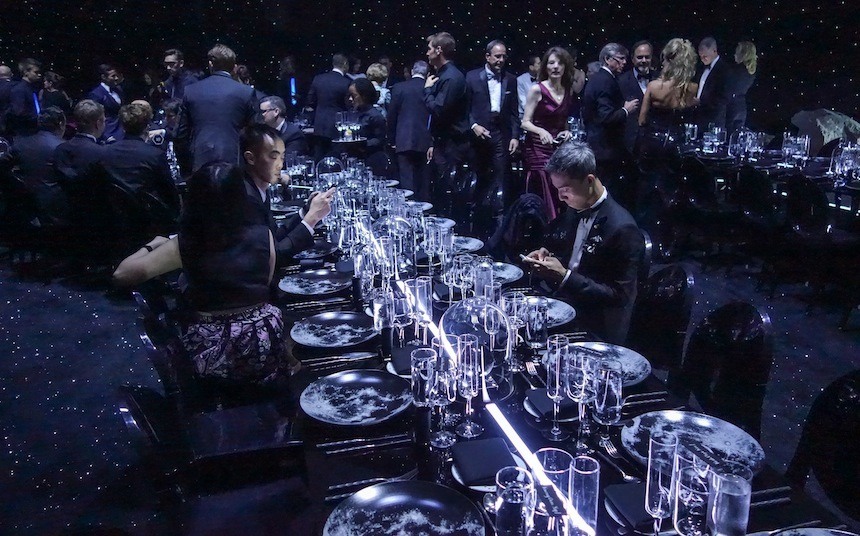
We were treated to a presentation by Stephen Urquhart in the company of George Clooney, Commander Jim Lovell, Lt. Gen. Tom Stafford and even Captain Eugene Cernan, Commander of Apollo 17 and the last man to walk on the Moon.
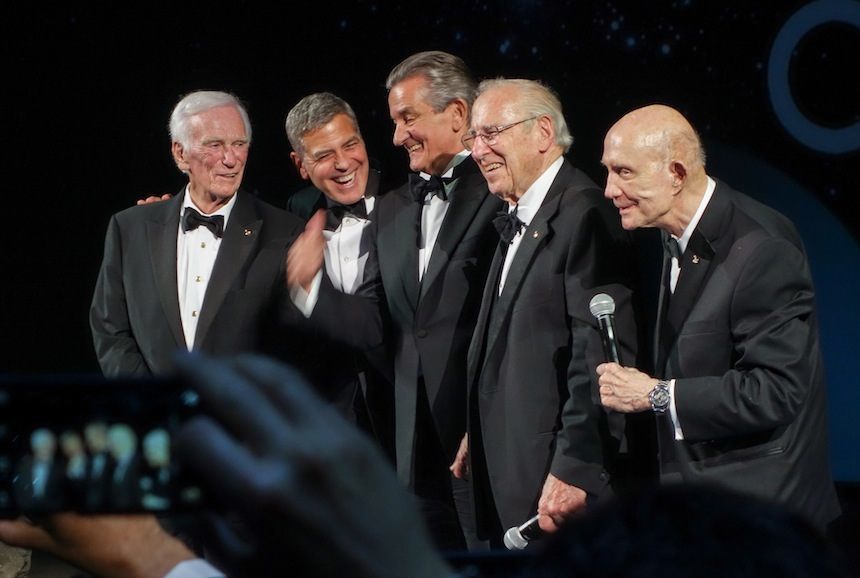
From left to right: Captain Eugene Cernan, George Clooney, Stephen Urquhart, Commander Jim Lovell and Lieutenant General Tom Stafford.
To his credit, Clooney seemed to have a genuine interest in the Apollo program and its connection to the Omega Speedmaster. As dinner wrapped up and the cloud of Instagrammers surrounded poor Clooney, it was time to hop on a bus from the Moon back to my hotel and catch a bit of sleep before my flight home early the next morning.
While the night was obviously Apollo-themed, the underlying message was about the importance of the Omega Speedmaster in those early years at NASA. At Baselworld this past March, we showed you the Speedmaster Apollo 13 Silver Snoopy Award, which commemorated not only Apollo 13, but the Silver Snoopy award (seen below) given to Omega for their contributions towards the safety and success of the Apollo missions.
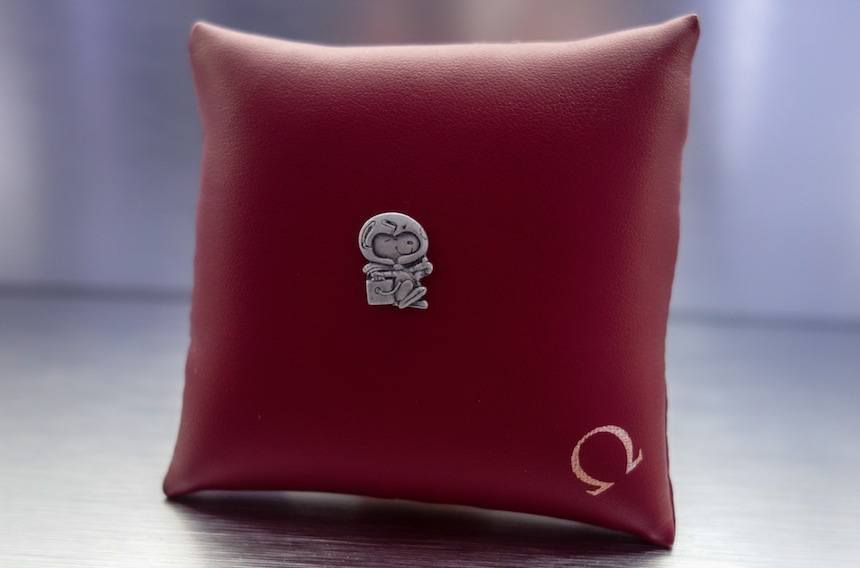
The very idea that Omega should receive this award was in fact championed by Tom Stafford, who was operating in a support capacity from Mission Control during the long sleepless days of Apollo 13’s return home. He felt so strongly that the Speedmaster was instrumental in the successful return of the Apollo 13 crew that he would later personally present the Silver Snoopy Award to Omega (above).
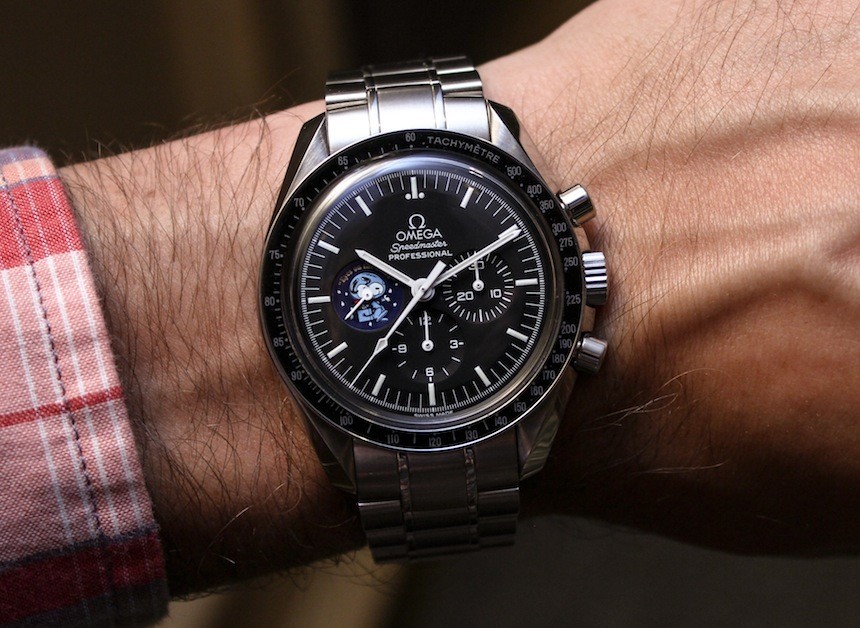
Briefly borrowed from Omega Speedmaster scholar Robert-Jan Broer (of Fratellowatches.com), this is the Omega Speedmaster Professional Snoopy 3578.51 which was released in 2003. With the Snoopy art in the nine sub dial, this original “Snoopy” was limited to 5441 pieces and the matching case back can be seen below.
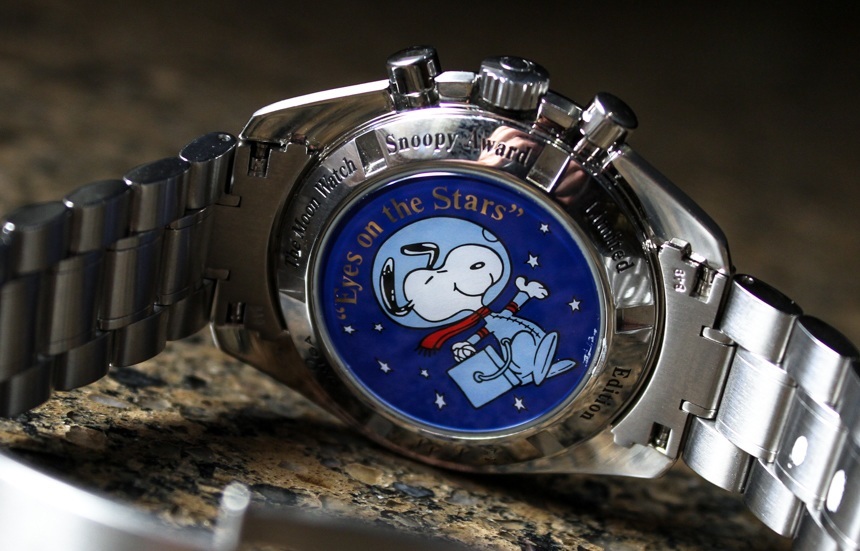
As always, context is crucial. My faux Moon mission was over and, as my flight whisked me home in relative safety and more-than-acceptable comfort, my mind considered how far we have come since the time of the Apollo Moon landings. While so much has changed, I think there are a few constants to be appreciated. Yes, space travel may have become too routine for its own good, eventually leading to the de-funding of NASA and the end of the Shuttle program. But the drive to venture into the unknown, to visit new worlds, still exists as we look forward to the future of NASA’s Orion platform.
People also remain largely unchanged, humans are still enchanted by the promise of space exploration and many private businesses have since sprung up to support the ever-ambitious dream of sending humans further and further into space.
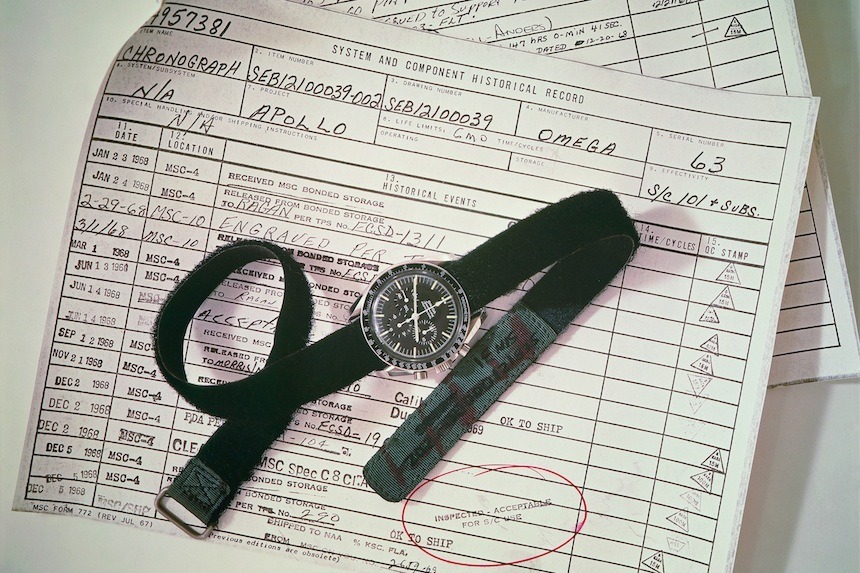
Finally, the Omega Speedmaster, which is still available in a model quite similar to those used for the Apollo program. The Moonwatch has withstood the test of not just NASA and the Apollo missions (and beyond), but also the ebb and flow of Earthly tastes, the quartz-crisis, and the continued growth of Omega. The Omega Speedmaster earned its iconic status by being connected with iconic events, which is also why I didn’t have to explain what Tang is. Wisely, Omega has protected that invaluable appeal by continuing to offer an Apollo-similar model alongside a dizzying array of branching iterations, special editions and sibling Speedmasters, all of which owe their success to the legendary origins of the first watch on the moon.
The golden era of space travel may have come and gone before my time, but the Omega Speedmaster is simultaneously a grounded reminder of Man’s past ambition to explore distant space, and a promise that it will still be around when we someday venture to do it again. omegawatches.com

